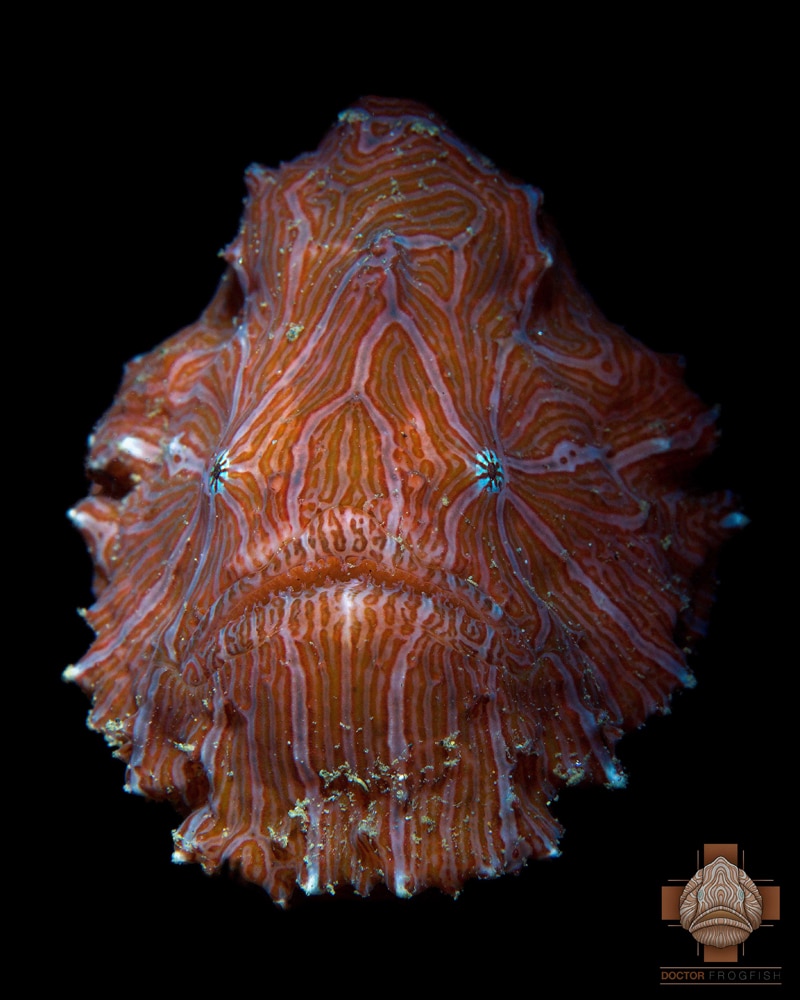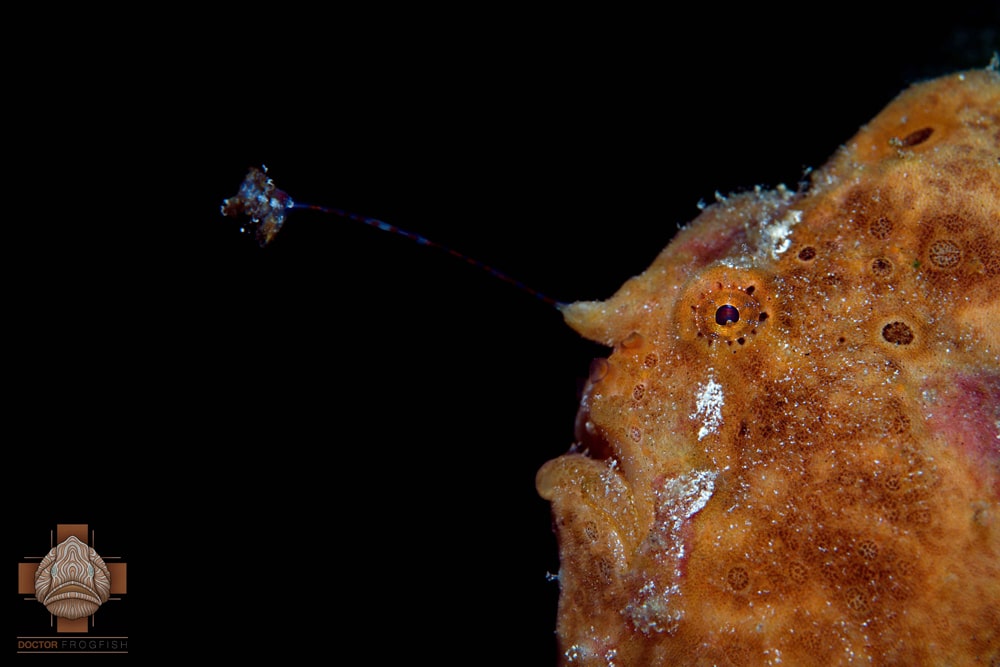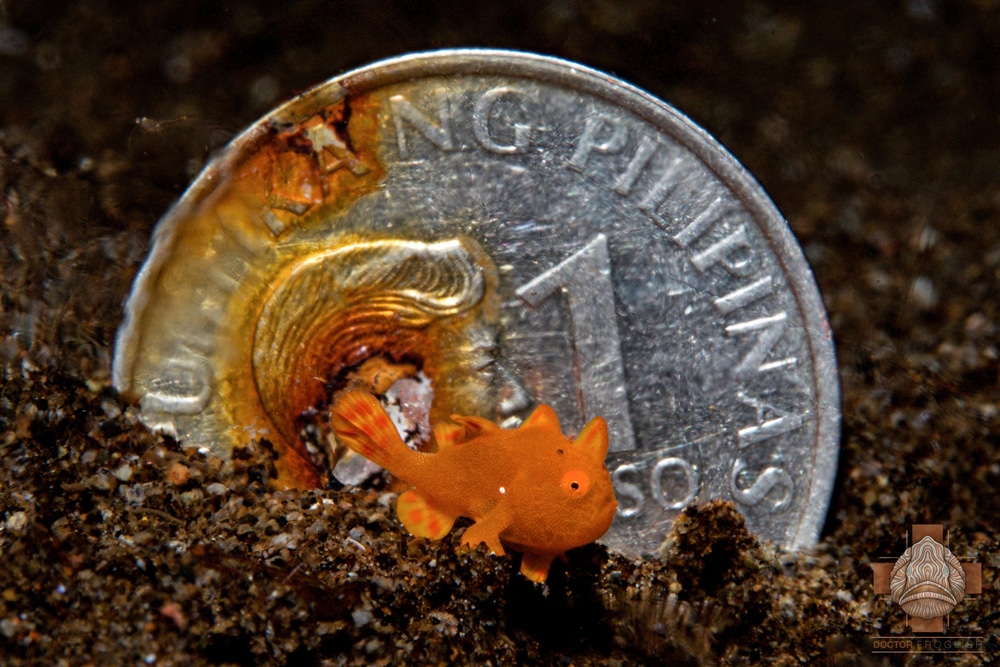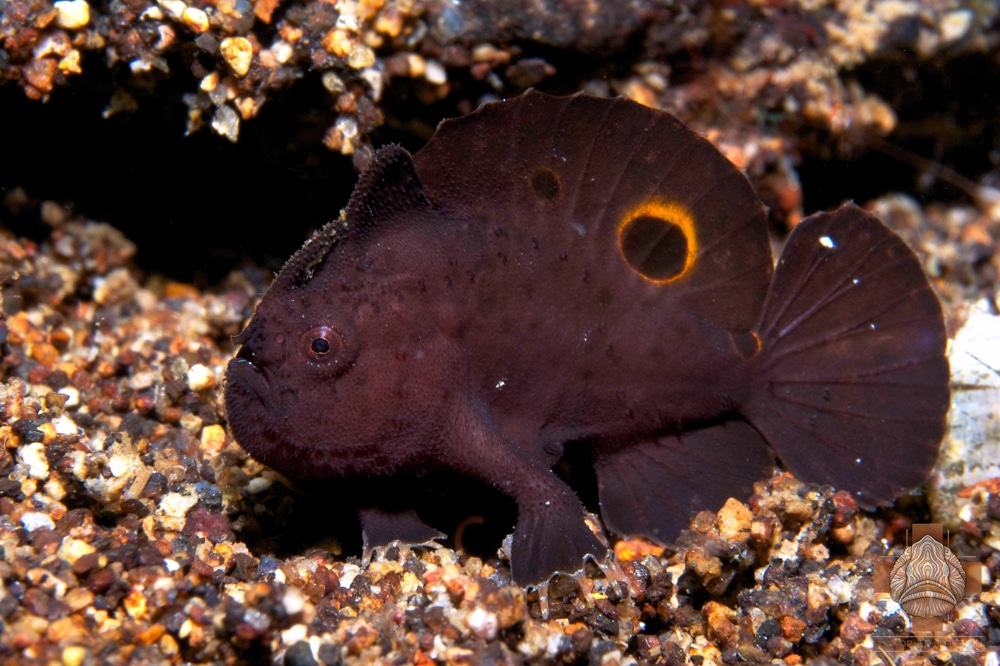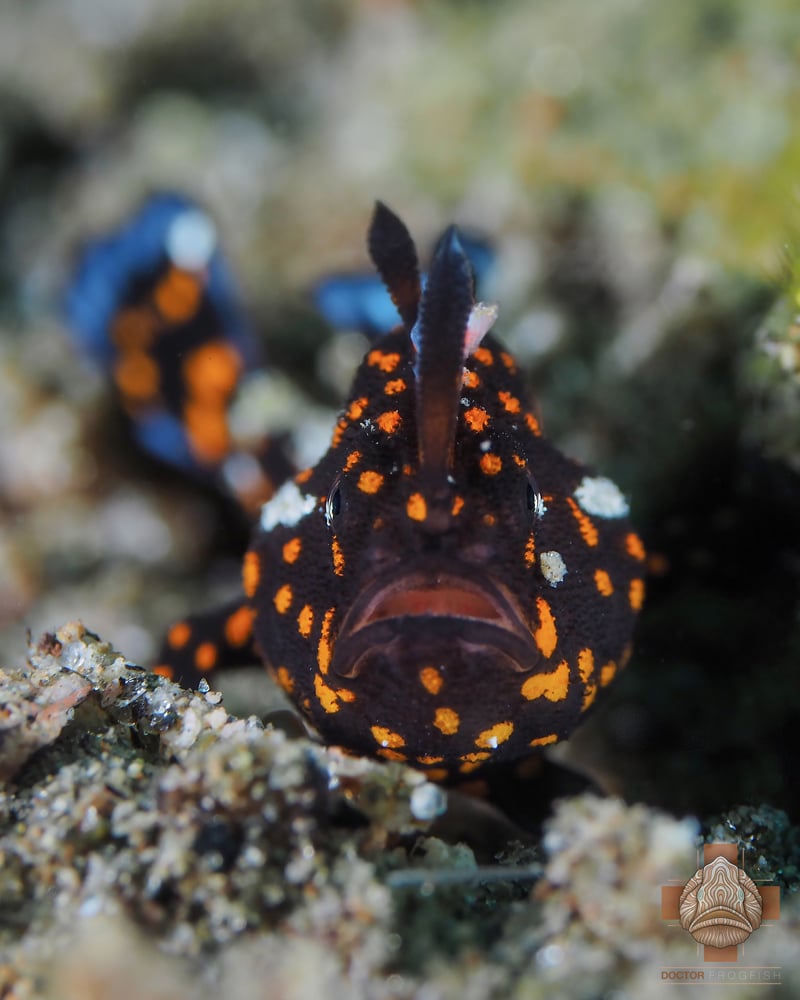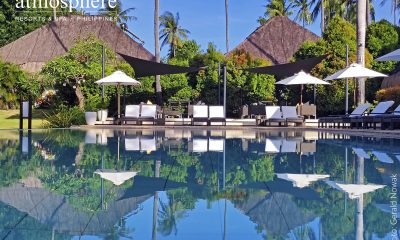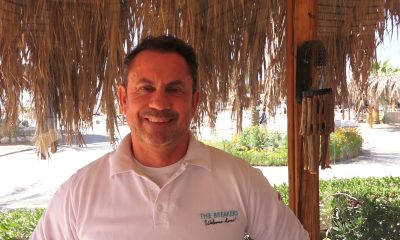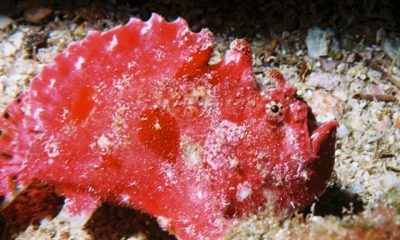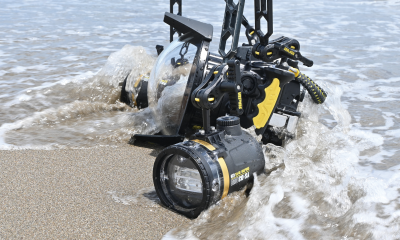News
Scubaverse Underwater Photographer Interview: Daniel Geary
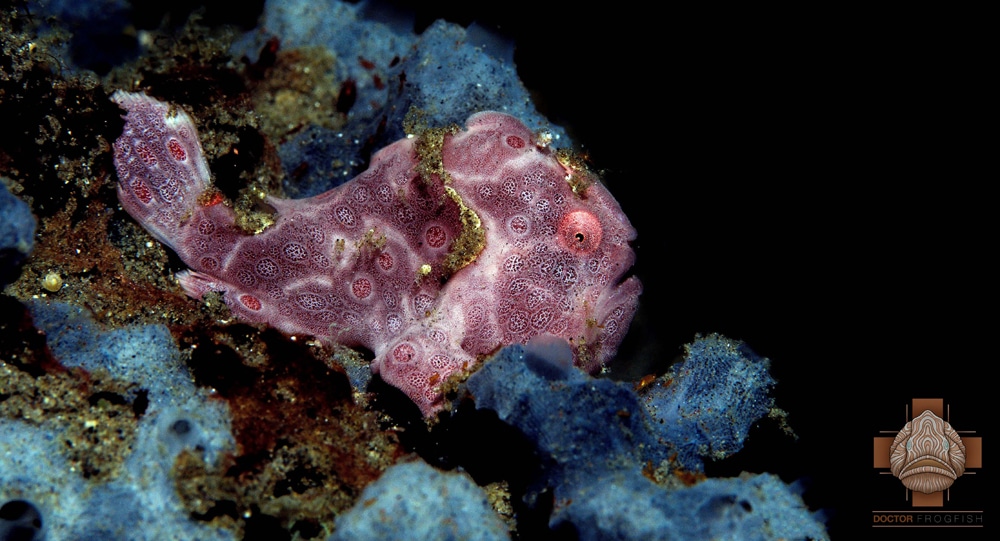
In an ongoing series, Scubaverse’s Underwater Photography Editor Nick Robertson-Brown talks to underwater photographers from around the world that he admires. In this blog: Daniel Geary…
 Daniel was born and raised in Orlando, Florida, fostering a love of the ocean since he was born. He has been diving for about ten years. After falling in love with the Philippines after his first visit, he moved there full time about five years ago and is currently based in Dauin, Philippines. Daniel teaches an exclusive PADI Frogfish Specialist Course with Atmosphere Resorts. He has won First Place in the Philippines-wide SNUPs Underwater Photo Contest, as well as Honorable Mentions in the OceanArt Competition and the Beneath The Sea Imaging Competition. He has had photos and articles published in Sport Diver Magazine, the Undersea Journal, EZDive Magazine, and online at DivePhotoGuide. His latest published photograph was the cover photo of the December 2017 quarterly edition of the Copeia Scientific Journal. He is on a quest to see as many frogfish species as possible and his current count is at least 17. Formerly photographing as Mean Guign Photography, Daniel can now be found on facebook and instagram under the name Dr. Frogfish, as well as the still-under-construction www.doctorfrogfish.com. For a portfolio of his photography over the past few years, you can check out www.meanguignphotography.com.
Daniel was born and raised in Orlando, Florida, fostering a love of the ocean since he was born. He has been diving for about ten years. After falling in love with the Philippines after his first visit, he moved there full time about five years ago and is currently based in Dauin, Philippines. Daniel teaches an exclusive PADI Frogfish Specialist Course with Atmosphere Resorts. He has won First Place in the Philippines-wide SNUPs Underwater Photo Contest, as well as Honorable Mentions in the OceanArt Competition and the Beneath The Sea Imaging Competition. He has had photos and articles published in Sport Diver Magazine, the Undersea Journal, EZDive Magazine, and online at DivePhotoGuide. His latest published photograph was the cover photo of the December 2017 quarterly edition of the Copeia Scientific Journal. He is on a quest to see as many frogfish species as possible and his current count is at least 17. Formerly photographing as Mean Guign Photography, Daniel can now be found on facebook and instagram under the name Dr. Frogfish, as well as the still-under-construction www.doctorfrogfish.com. For a portfolio of his photography over the past few years, you can check out www.meanguignphotography.com.
NRB: How did your underwater photography start?
DG: I bought an Olympus Stylus Tough about ten years ago and used it while snorkeling. I brought it with me when I travelled to the Philippines for two months, roughly seven years ago, and realized that I had the bug and needed to upgrade and have been photographing ever since.
NRB: What is your favourite u/w camera equipment (past & present) & why?
DG: My favorite camera equipment would have to be my old Olympus EPL-5. I currently use an Olympus OMD EM5, Mark II, but the Olympus EPL-5 is what made me realize how much I really enjoyed underwater photography. This was the first camera I owned that allowed me to shoot using fully manual settings and a dedicated 60mm macro lens. I love that it is a little bit bigger than a compact camera, but gets shots that are comparable to much more expensive, and bigger, DSLR cameras.
NRB: What would be your advice to anyone new to underwater photography?
DG: You need to be a great diver to be a great photographer, and you need to understand the camera you are using. Too many times I see people who have a massive DSLR rig and few dives and don’t understand why they can’t get photos like the ones they saw on facebook. Buoyancy is incredibly important, without it your photos will suffer. I don’t lie on the ground when I photograph, like many photographers, instead choosing to contort my body into weird positions to get the shot I want – impossible without good buoyancy. As for equipment, start with something small, like the Olympus TG-5 or 6, that you can build upon. I always suggest the TG-5 or 6 because it has an internal flash that is powerful enough to use for macro on its own, but can be expanded with additional external strobes and lenses or dome ports. If you buy a big rig, BUY FLOATS. A neutrally-buoyant camera is so much easier to use than a camera that sinks like a rock. I teach photo workshops and one of the biggest reasons my students are having trouble is that their camera rig is too heavy underwater.
NRB: What, or who, has been your single biggest inspiration for your underwater photography?
DG: My single biggest inspiration, animal-wise, for my underwater photography has been the weird and wonderful frogfish. I love introducing people to this fish who have never heard of it, or who don’t know much about it, and I am always inspired to try and show rare behaviors, color variations, or species to a bigger audience. My biggest inspirations, person-wise, are the people that are champions for the critters, those that are not afraid to speak out about the lack of ethics that is evident in the age of photographer on social media. Alex Tattersall, Markus Roth, and Saeed Rashid, three photographers who are vocal about ethics in underwater photography, come to mind.
NRB: What image are you most proud of and why?
DG: The image I am most proud of is my well known “Investment Opportunity” shot. It was a finalist in the OceanArt Competition in 2017. I’m proud of it because it is completely different from everything else you see out there and is my signature shot – a juvenile frogfish in front of a Philippine Peso coin. The coin has rust that matches the baby frogfish in the photo, it includes the location (Philippines) in the text of the coin, and it shows just how small these little critters are. It tells an entire story without needing an explanation. I have been photographing with a coin since 2014 and none of my shots have come close to this one in terms of composition.
NRB: Where is your favourite dive location, and is it for the photography?
DG: My favorite dive location is Dauin, Philippines. I have been diving here for seven years now and have made it my home for the past five years. It is great for photography because you have the macro heaven on the coast, more frogfish than anywhere else, but you can put on your wide angle setup and go photograph turtles, jacks, and sea kraits over at Apo Island, 30 minutes away. I also love that most dive sites are shore accessible, since that is my preferred way to dive.
NRB: What are you views on marine life manipulation, moving subjects?
DG: Thank you for asking this question. I strongly believe that marine life should NOT be manipulated! I will admit, I have moved marine life in the past. That is how I was taught by a photographer I looked up to at the time, so I thought it was okay. I made the decision to stop moving marine life over three years ago and have been known to stop complete strangers from moving marine life underwater. I also limit the amount of photos I take of an animal as I believe that taking hundreds of photos of a single critter is just as bad or worse than moving the subject itself. Good photographs should arise from the talent and skill (and luck, of course) of the photographer, not an exotic animal moved into a better background. You can check out my articles about alternatives to manipulation – Part I and Part II, for some good tips.
NRB: What do you look for when you are making your images?
DG: Frogfish! No, I just look for something in the viewfinder that will translate to a good photo and make me think ‘Wow!’ I prefer to photograph really cool eyes, natural patterns, or funky behavior. I like to showcase natural camouflage, like a juvenile cowfish staring at me between two blades of seagrass, or a frogfish peeking out between crinoid arms, instead of moving the offending habitat out of the way for a ‘clear’ shot. I don’t look for super specific poses or backgrounds since that tends to put me in a box mentally.
NRB: What motivates you to take u/w photos?
DG: The critters motivate me. Most of the animals I photograph are unknown to non-divers, and some of them are even unknown to many divers themselves. Everyone knows what a sea turtle looks like, a seahorse, shark, dolphin, whale, clownfish etc, and those animals get the most attention, the most scientific research grants, and the most screen time. I believe that many of these little critters that I photograph are incredibly important to tourism but are routinely overlooked by science. If I can use my photos to help educate a bigger audience about the existence of these animals and how cool and interesting they are, which could result in them getting more attention and research, then that’s all the motivation that I need.
NRB: If you could photograph any one thing/place what or where would that be?
DG: If you asked me this question before I went to Ambon, the answer would be the Psychedelic Frogfish, but I already photographed one, so I will have to think for a minute. I guess that if I could photograph any one thing, it would have to be the Red Handfish in Tasmania! Its so weird and rare and has the coolest mohawk.
To find out more about Daniel, visit his website by clicking here.
Gear News
Scubapro Free Octopus Promotion 2024

Free Octopus with every purchase of a SCUBAPRO regulator system
Just in time for the spring season, divers can save money with the FREE OCTOPUS SPRING PROMOTION! Until July 31st SCUBAPRO offers an Octopus for free
with every purchase of a regulator system!
Get a free S270 OCTOPUS with purchase of these combinations:
MK25 EVO or MK19 EVO with A700
MK25 EVO or MK19 EVO with S620Ti
MK25 EVO or MK19 EVO with D420
MK25 EVO Din mit S620Ti-X
Get a free R105 OCTOPUS with purchase of the following combinations:
MK25 EVO or MK19 EVO with G260
MK25 EVO or MK17 EVO with S600
SCUBAPRO offers a 30-year first owner warranty on all regulators, with a revision period of two years or 100 dives. All SCUBAPRO regulators are of course certified according to the new European test standard EN250-2014.
Available at participating SCUBAPRO dealers. Promotion may not be available in all regions. Find an authorized SCUBAPRO Dealer at scubapro.com.
More information available on www.scubapro.com.
Blogs
Northern Red Sea Reefs and Wrecks Trip Report, Part 3: The Mighty Thistlegorm

Jake Davies boards Ghazala Explorer for an unforgettable Red Sea diving experience…
Overnight, the wind picked up, making the planned morning dive a bit bumpy on the Zodiacs to the drop point on Thomas Reef. There, we would dive along the reef before descending through the canyon and then passing under the arch before ascending the wall with a gentle drift. The site provided great encounters with more pelagic species, including shoals of large barracuda, tuna, and bigeye trevally.
Once back on the boat, it was time to get everything tied down again as we would head back south. This time, with the wind behind us, heading to Ras Mohammed to dive Jackfish Alley for another great gentle drift wall dive before then heading up the coast towards the Gulf of Suez to moor up at the wreck of the Thistlegorm. This being the highlight wreck dive of the trip and for many onboard, including myself, it was the first time diving this iconic wreck. I had heard so much about the wreck from friends, and globally, this is a must on any diver’s list. Fortunately for us, there was only one other boat at the site, which was a rarity. A great briefing was delivered by Ahmed, who provided a detailed background about the wreck’s history along with all the required safety information as the currents and visibility at the site can be variable.

Kitting up, there was a lot of excitement on deck before entering the water and heading down the shoreline. Descending to the wreck, there was a light northerly current which reduced the visibility, making it feel more like the conditions that can be found off the Welsh coast. At 10m from the bottom, the outline of the wreck appeared as we reached the area of the wreck which had been bombed, as our mooring line was attached to part of the propeller shaft. Arriving on deck, instantly everywhere you looked there were many of the supplies which the ship was carrying, including Bren Carrier tanks and projectiles that instantly stood out.

We headed around the exterior, taking a look at the large propeller and guns mounted on deck before entering the wreck on the port side to take a look in the holds. It was incredible to see all the trucks, Norton 16H, and BSA motorcycles still perfectly stacked within, providing a real snapshot in time.

Overall, we had four dives on the Thistlegorm, where for all of the dives we were the only group in the water, and at times, there were just three of us on the whole wreck, which made it even more special, especially knowing that most days the wreck has hundreds of divers. Along with the history of the wreck, there was plenty of marine life on the wreck and around, from big green turtles to batfish, along with shoals of mackerel being hunted by trevally. Some unforgettable dives.

The final leg of the trip saw us cross back over the Suez Canal to the Gobal Islands where we planned to stay the night and do three dives at the Dolphin House for the potential of sharing the dive with dolphins. The site, which included a channel that was teeming with reef fish, especially large numbers of goatfish that swam in large shoals along the edge of the reef. These were nice relaxing dives to end the week. Unfortunately, the dolphins didn’t show up, which was okay as like all marine life they are difficult to predict and you can’t guarantee what’s going to be seen. With the last dive complete, we headed back to port for the final night where it was time to clean all the kit and pack before the departure flight the next day.

The whole week from start to finish on Ghazala Explorer was amazing; the boat had all the facilities you need for a comfortable week aboard. The crew were always there to help throughout the day and the chefs providing top quality food which was required after every dive. The itinerary providing some of the best diving with a nice mixture of wreck and reef dives. I would recommend the trip to anyone, whether it’s your first Red Sea liveaboard in the Red Sea or you’re revisiting. Hopefully, it’s not too long before I head back to explore more of the Red Sea onboard Ghazala Explorer.

To find out more about the Northern Red Sea reef and wrecks itineraries aboard Ghazala Explorer, or to book, contact Scuba Travel now:
Email: dive@scubatravel.com
Tel: +44 (0)1483 411590
Photos: Jake Davies / Avalon.Red
-

 News3 months ago
News3 months agoHone your underwater photography skills with Alphamarine Photography at Red Sea Diving Safari in March
-

 News3 months ago
News3 months agoCapturing Critters in Lembeh Underwater Photography Workshop 2024: Event Roundup
-

 Marine Life & Conservation Blogs2 months ago
Marine Life & Conservation Blogs2 months agoCreature Feature: Swell Sharks
-

 Blogs2 months ago
Blogs2 months agoMurex Resorts: Passport to Paradise!
-

 Blogs2 months ago
Blogs2 months agoDiver Discovering Whale Skeletons Beneath Ice Judged World’s Best Underwater Photograph
-

 Gear Reviews3 months ago
Gear Reviews3 months agoGear Review: Oceanic+ Dive Housing for iPhone
-

 Marine Life & Conservation2 months ago
Marine Life & Conservation2 months agoSave the Manatee Club launches brand new webcams at Silver Springs State Park, Florida
-

 News3 months ago
News3 months agoWorld’s Best Underwater Photographers Unveil Breathtaking Images at World Shootout 2023


